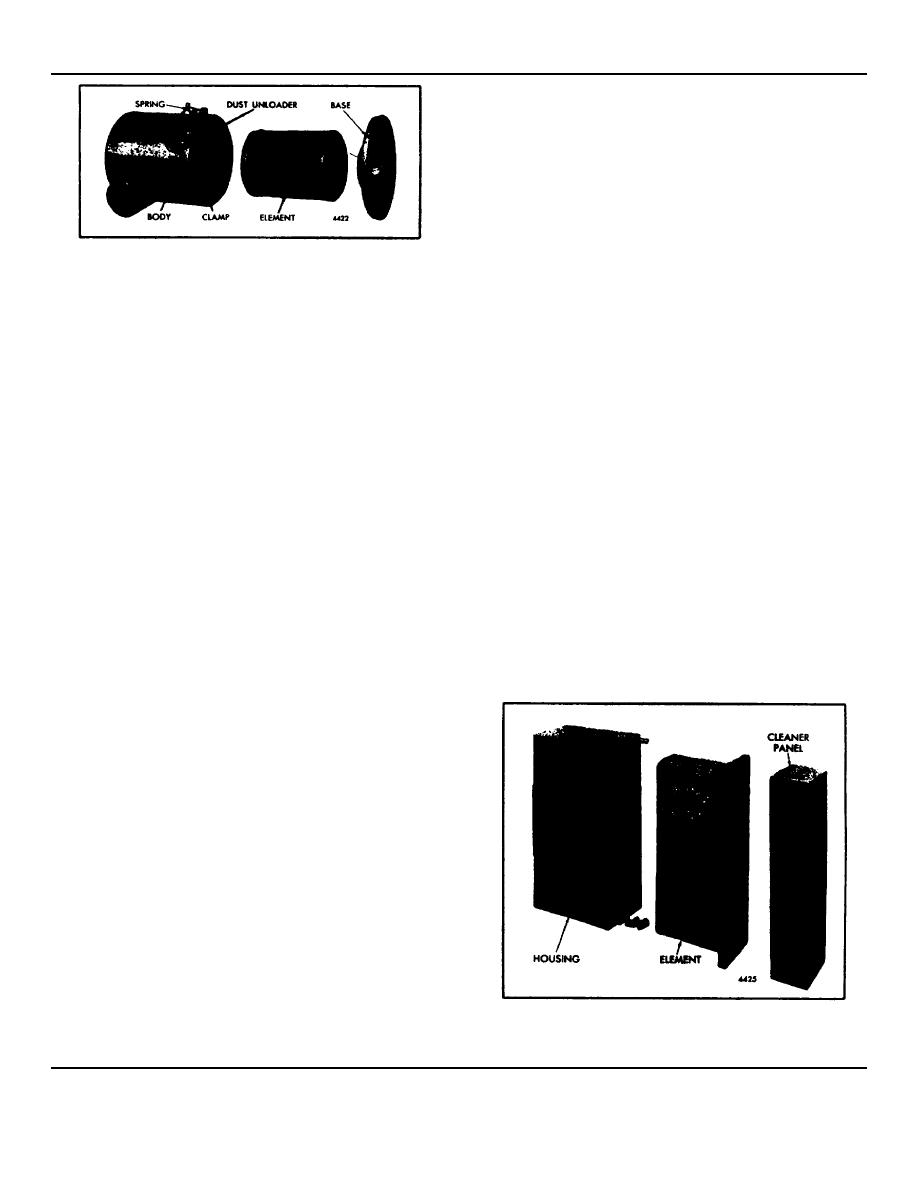
Engine Systems
DETROIT DIESEL
Page 20 DETROIT DIESEL loosened foreign material
from the element. Shake out excess water from the
element and allow it to dry thoroughly.
CAUTION: Do not attempt to remove
excess water by using compressed
air.
4. Inspect the cleaned element with a light bulb after
each cleaning for damage or rupture. The slightest
break in t(e element will admit sufficient airborne dirt to
Fig. 11 - United Specialties Dry Type Air Cleaner
cause rapid failure of piston rings. If necessary, replace
the element.
1. Loosen the clamp screw and check the dust unloader
for obstruction or damage.
5. Inspect the gasket on the end of the element. If the
gasket is damaged or missing, replace the element.
2. Unlock the spring clamps that hold the cleaner body
to the cleaner base which is bolted to the air inlet
6. Install the element on the base with the gasket side
housing. Remove the body and then remove the
of the element down against the base. Place the body
element from the cleaner base.
over the element and base and tighten the spring
clamps by hand.
3. The paper pleated air cleaner element can be
cleaned as follows:
7. Replace the element after 10 washings or I year of
service, whichever comes first, or any time damage is
a. For a temporary expedient in the field, tap the side
noted.
or end of the element carefully against the palm of
your hand.
8. Install the dust unloader and tighten the clamp.
CAUTION: Do not tap the element
The Farr dry-type air cleaner (Fig. 12) is designed to
against a hard surface. This could
provide highly efficient air filtration under all operating
damage the element.
conditions and is not affected by engine speed. The
cleaner assembly consists of a cleaner panel with a
b. Compressed air can be used when the major
replaceable impregnated paper filter element.
contaminant is dust. The compressed air (not to
exceed 100 psi) should be blown through the
The cleaner panel and replaceable filter element are
element in a direction opposite to the normal air
held together in a steel housing with fasteners.
flow. Insert the air nozzle inside of the element and
gently tap and blow out the dust with air. When
cleaning the dust from the outside of the element,
hold the nozzle at least 6" from the element.
c.
Wash the element if compressed air is not
available, or when the contaminant is carbon, soot,
oily vapor or dirt which cannot be removed with
compressed air.
d. Agitate the element in warm water containing a non-
sudsing detergent.
CAUTION: Do not use water hotter
than your hand can stand, solvents,
oil, fuel oil or gasoline.
Preceding the washing, it helps to direct air (not
exceeding 100 psi) through the element in a direction
Fig. 12 - Farr Dry Type Air Cleaner
opposite the normal air flow to dislodge as much dust as
possible. Reverse flush with a stream of water (not
exceeding 40 psi) until the water runs clean to rinse all
Page 20

